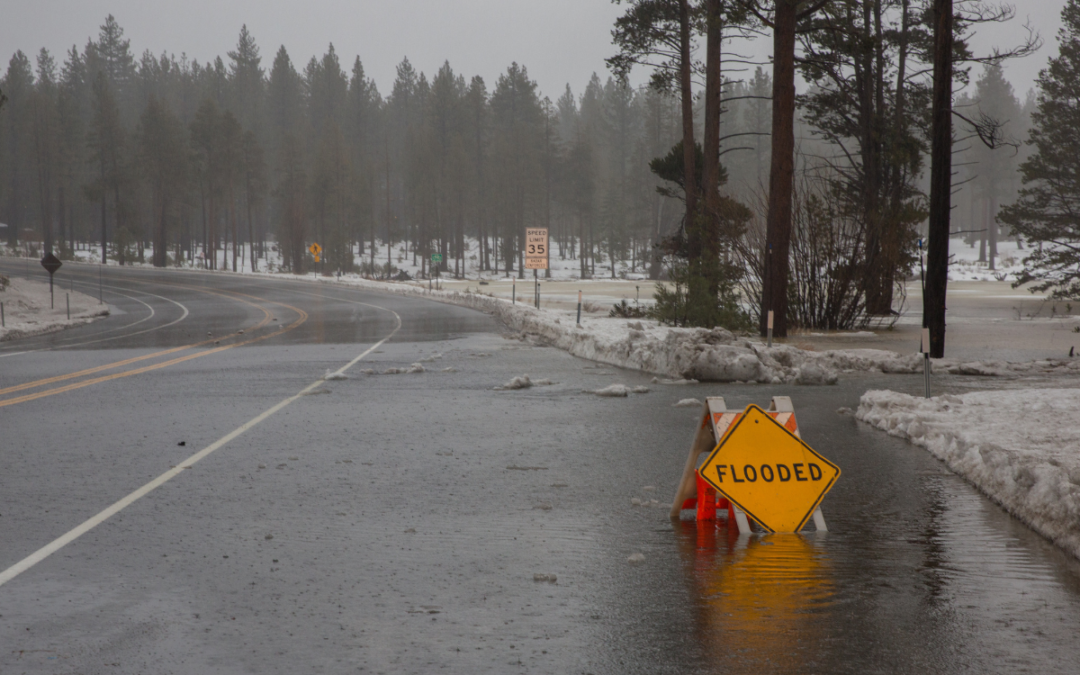Driving Heavy Rain and Flooded Roads
Driving in rainy conditions presents a unique set of challenges, including slippery roads, reduced visibility, and the potential for floods. Heavy downpours can quickly escalate into dangerous situations, transforming streets into treacherous streams. Being prepared and knowing how to navigate these conditions can mean the difference between a safe journey and a perilous one. Here are essential tips for driving safely in heavy rain and when faced with flooded roads.
Increase Your Following Distance
Wet roads significantly increase your vehicle’s stopping distance, therefore it’s crucial to have safe spacing. Under normal circumstances, a three-second following distance is recommended. However, in heavy rain, this should be doubled. The extra space allows you more time to react to sudden stops and decreases the likelihood of a rear-end collision.
Use Windshield Wipers and Headlights
Visibility is crucial in heavy rain. Ensure your windshield wipers are in good working order and adjust the speed as necessary to maintain clear visibility. Headlights are equally important, not just to see, but to be seen by other drivers. Even during daylight hours, turning on your vehicle’s headlights can significantly increase your visibility to others.
Avoid Driving Through Flooded Areas
One of the most critical decisions you can make is to avoid driving through flooded areas. It can be challenging to determine the depth of water covering a road, and even shallow water can cause a vehicle to hydroplane or stall. Moving water can also erode road surfaces or conceal hazards such as potholes and debris. As little as 12 inches of moving water can carry away a small car, while 2 feet of rushing water can sweep away most vehicles. The adage “Turn around, don’t drown” holds true; it’s always safer to seek an alternative route than to risk crossing flooded roads.

Recognize the Dangers of Hydroplaning
Hydroplaning occurs when your tires encounter more water than they can scatter, causing them to lose contact with the road and slide uncontrollably. If you start to hydroplane, the best course of action is to gently ease off the accelerator and steer straight until you regain control. Avoid sudden braking or turning, which can lead to a spin.
Know When to Pull Over
Sometimes, the intensity of the rain can reduce visibility to near zero, making continued driving unsafe. If you find yourself in such a situation, look for a safe place to pull over and wait out the worst of the downpour. Keep your headlights on and activate your hazard lights to alert other drivers to your presence.
Be Prepared
Before the rainy season begins, ensure your vehicle is prepared. Check that your tires have adequate tread depth, your headlights and brake lights are fully functional, and your windshield wipers are effective. Keeping an emergency kit in your car, including reflective signs or cones, a flashlight, and extra batteries, can also be a lifesaver in case of a breakdown or accident.
Driving Safely in Fog
Fog can turn a familiar route into a challenging and potentially dangerous journey. By adapting your driving habits, using your vehicle’s features correctly, and exercising caution, you can significantly reduce the risk of accidents when driving in foggy conditions. Remember, the key to safe driving in fog is patience, preparation, and staying focused on the conditions around you.
Drive with Confidence!
Keep up with all the latest driving news. Expolre our blog packed with essential tips and expert advice on all things related to DRIVING!




